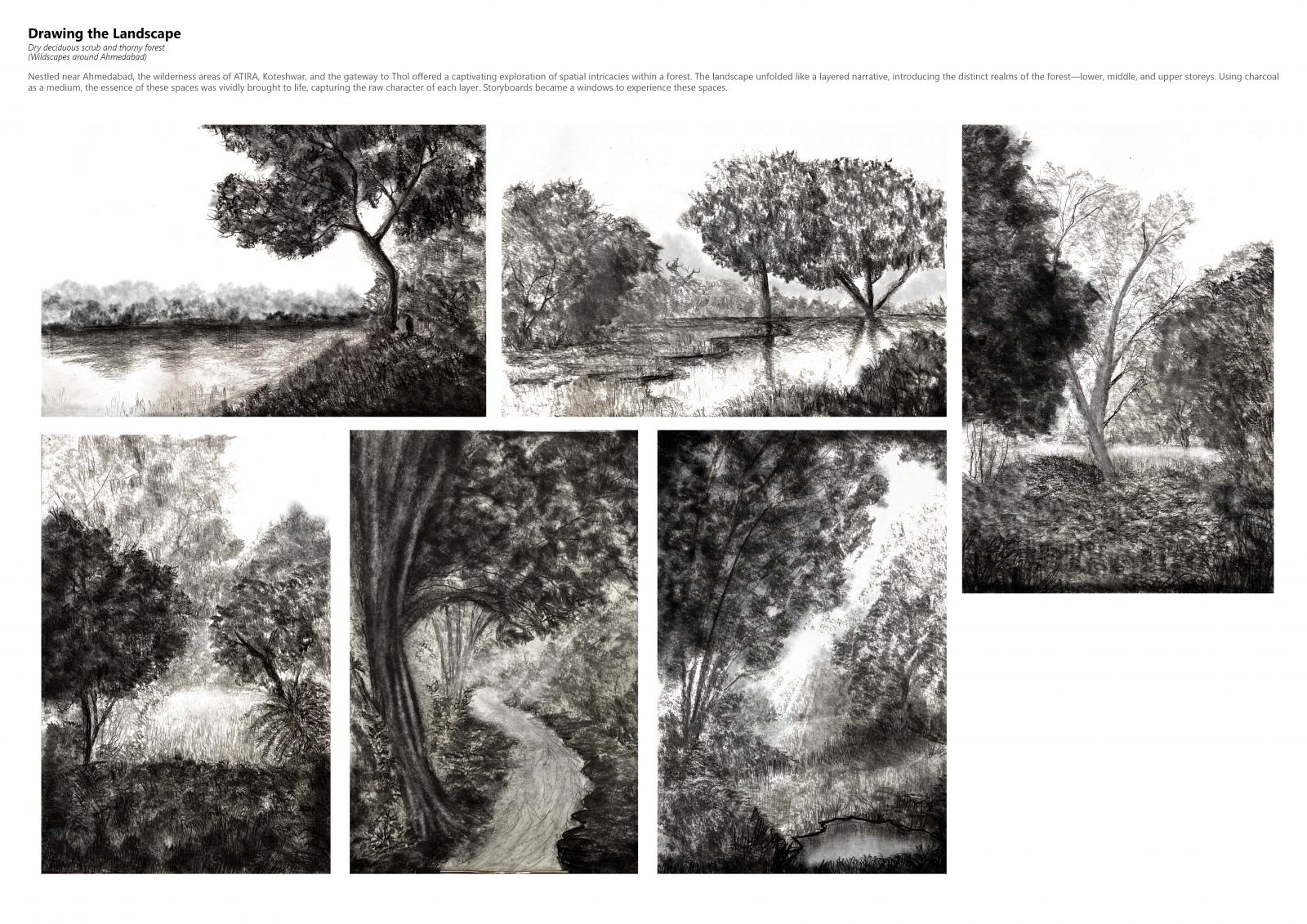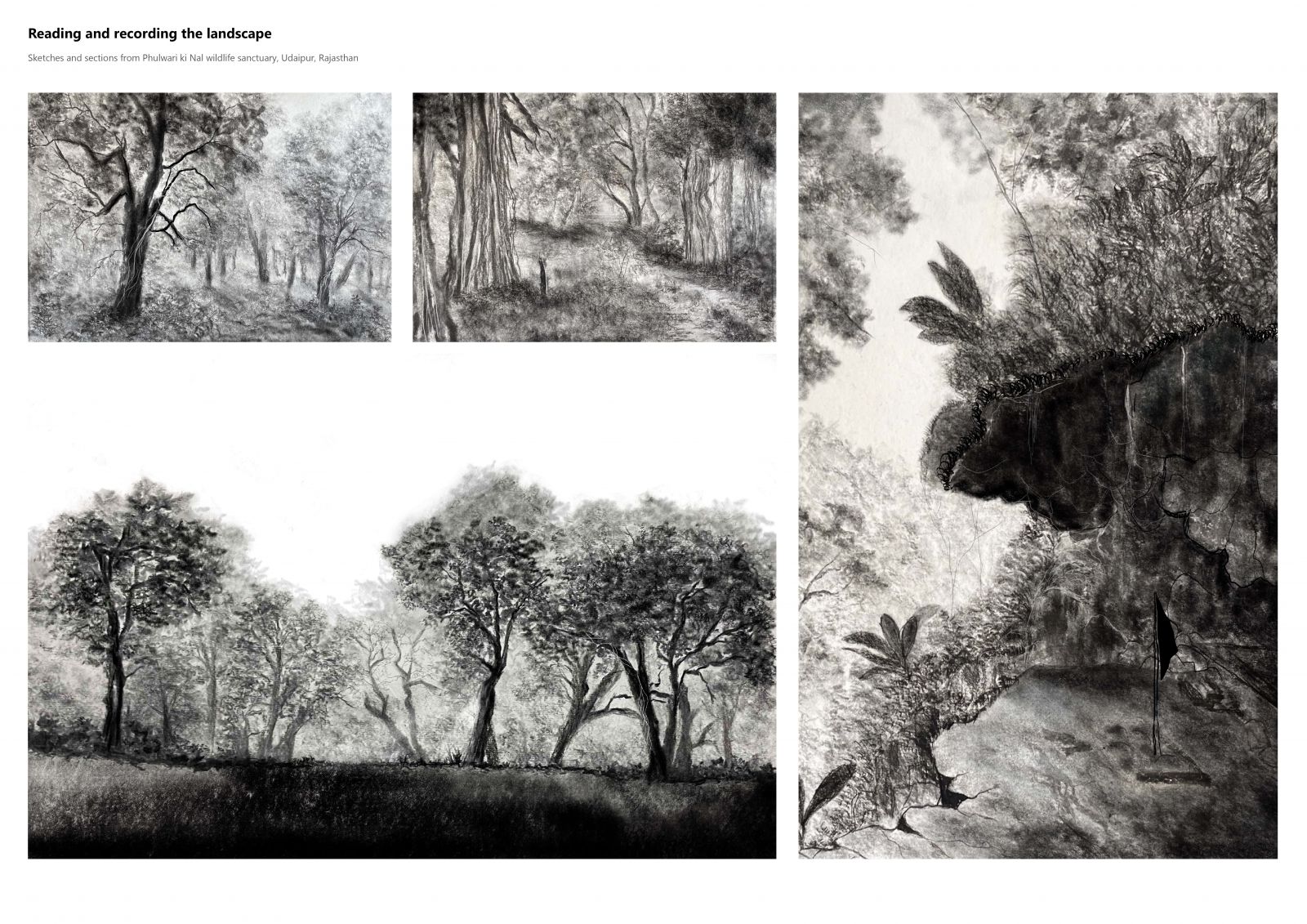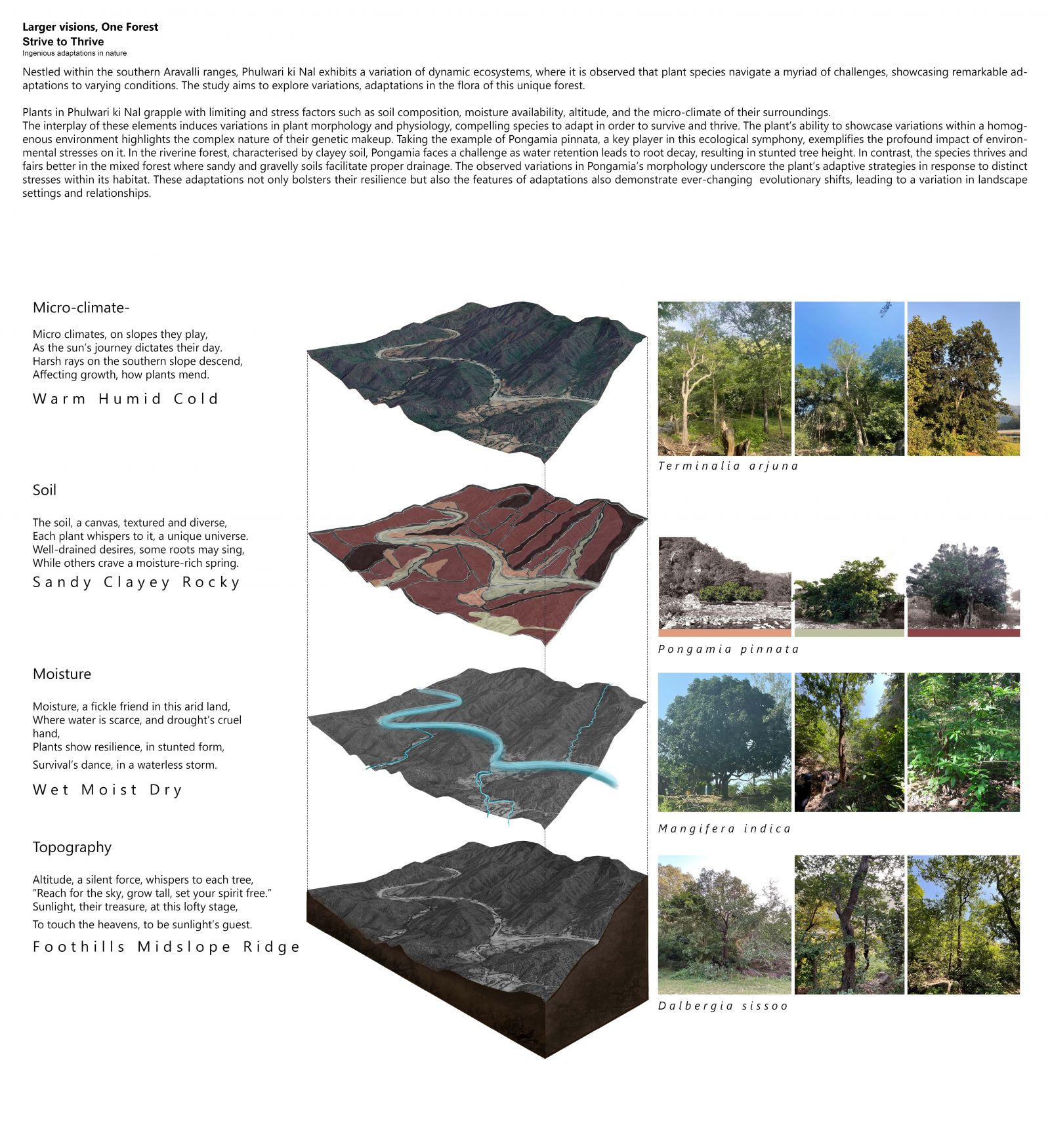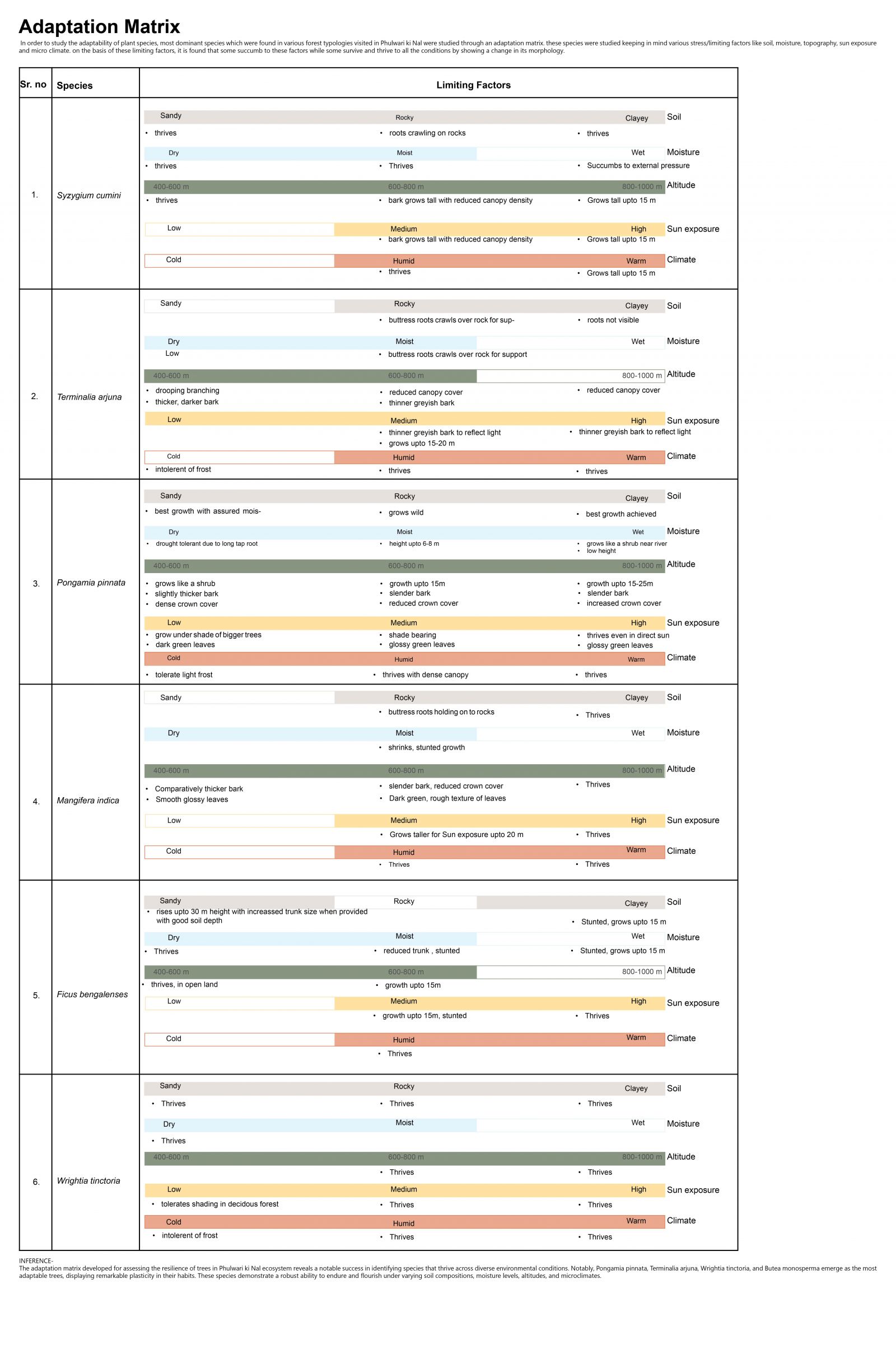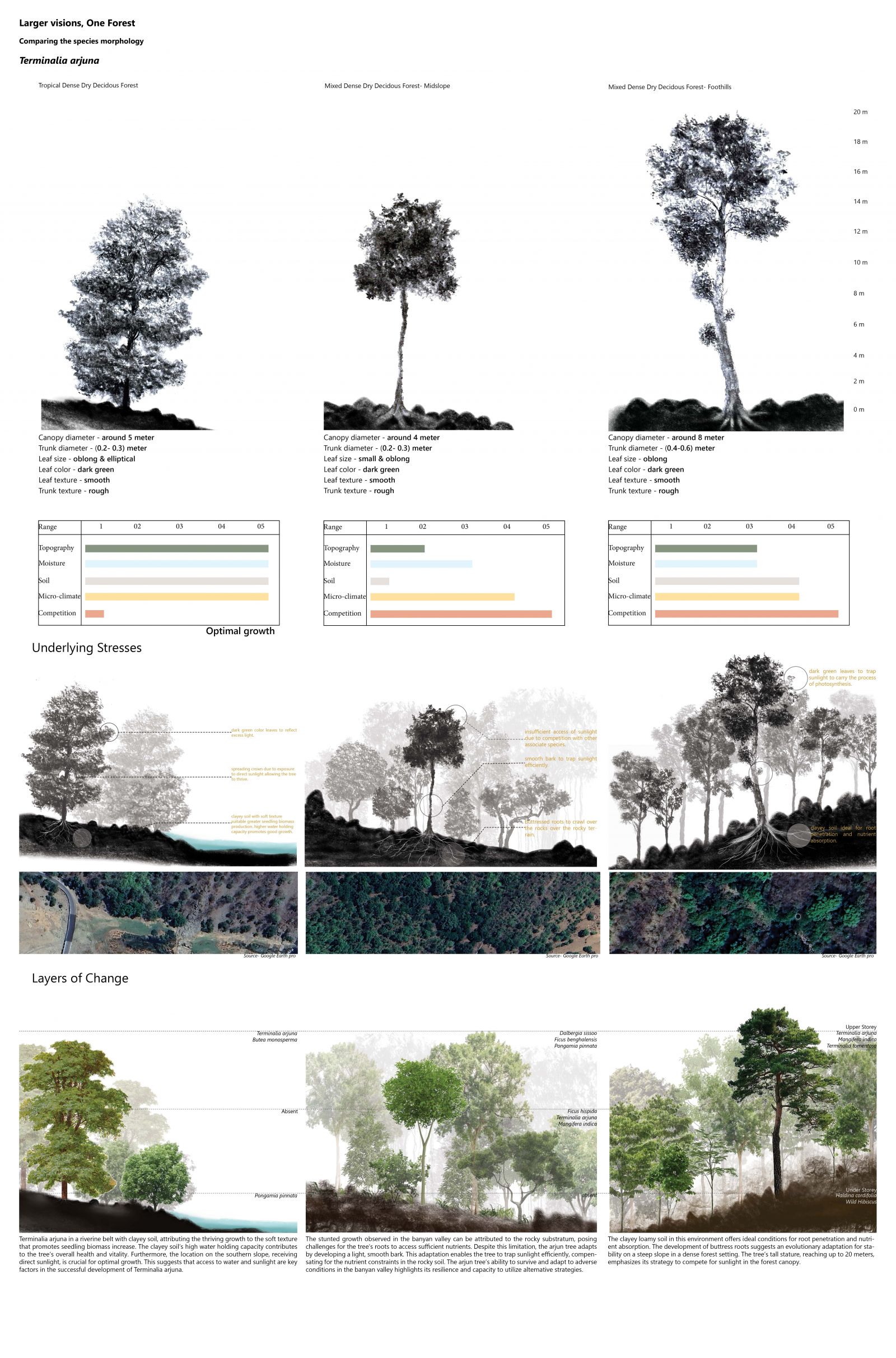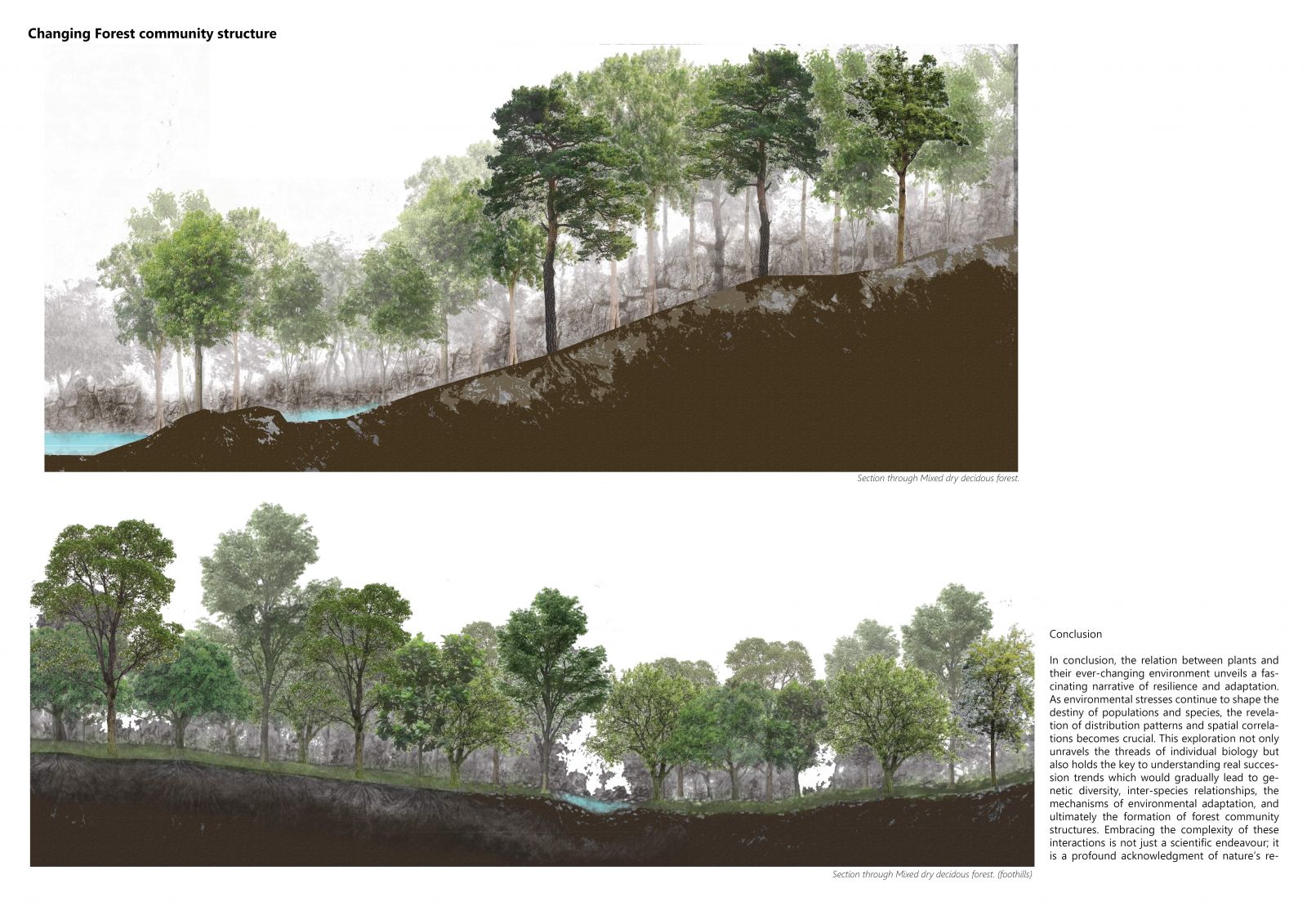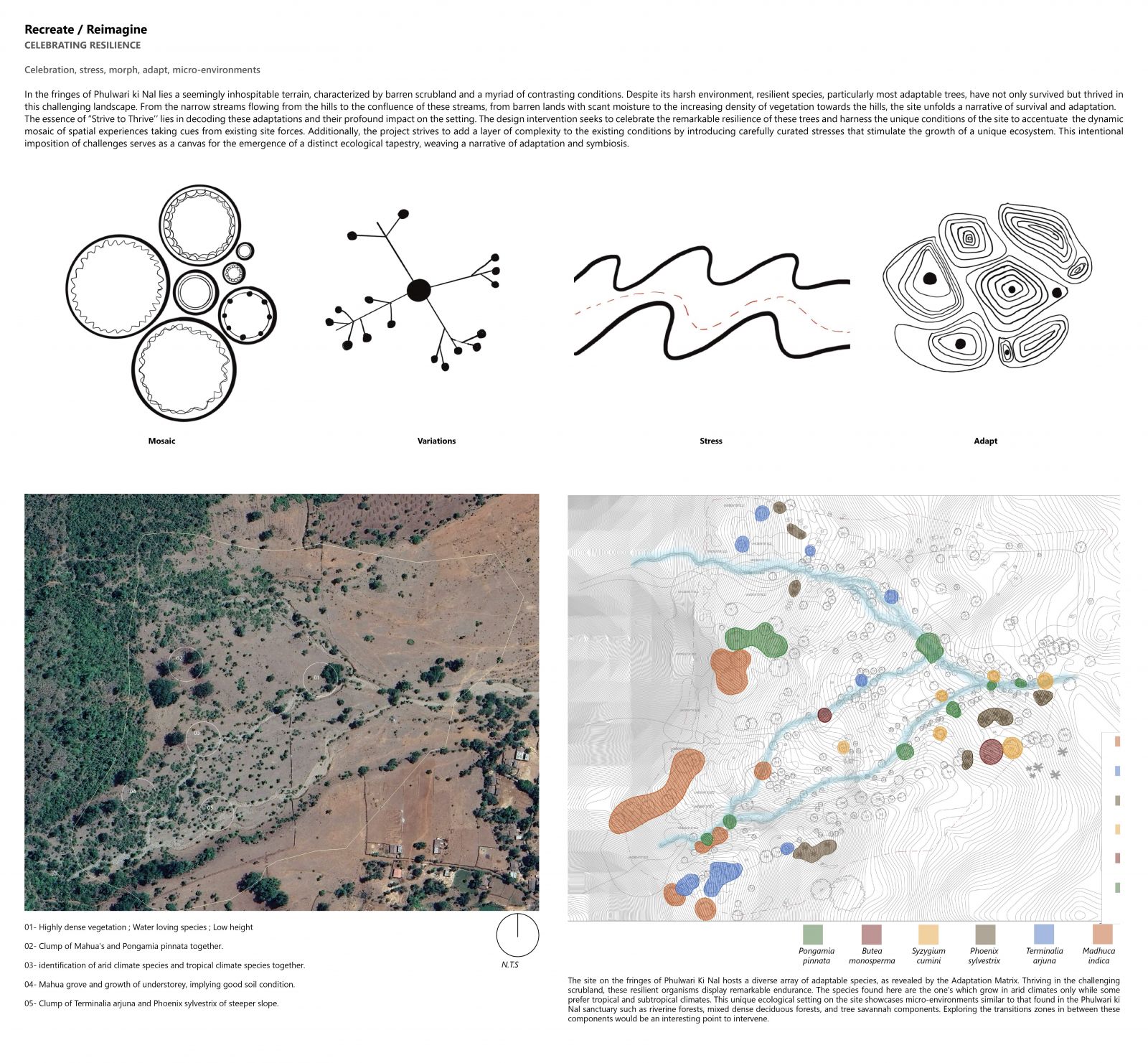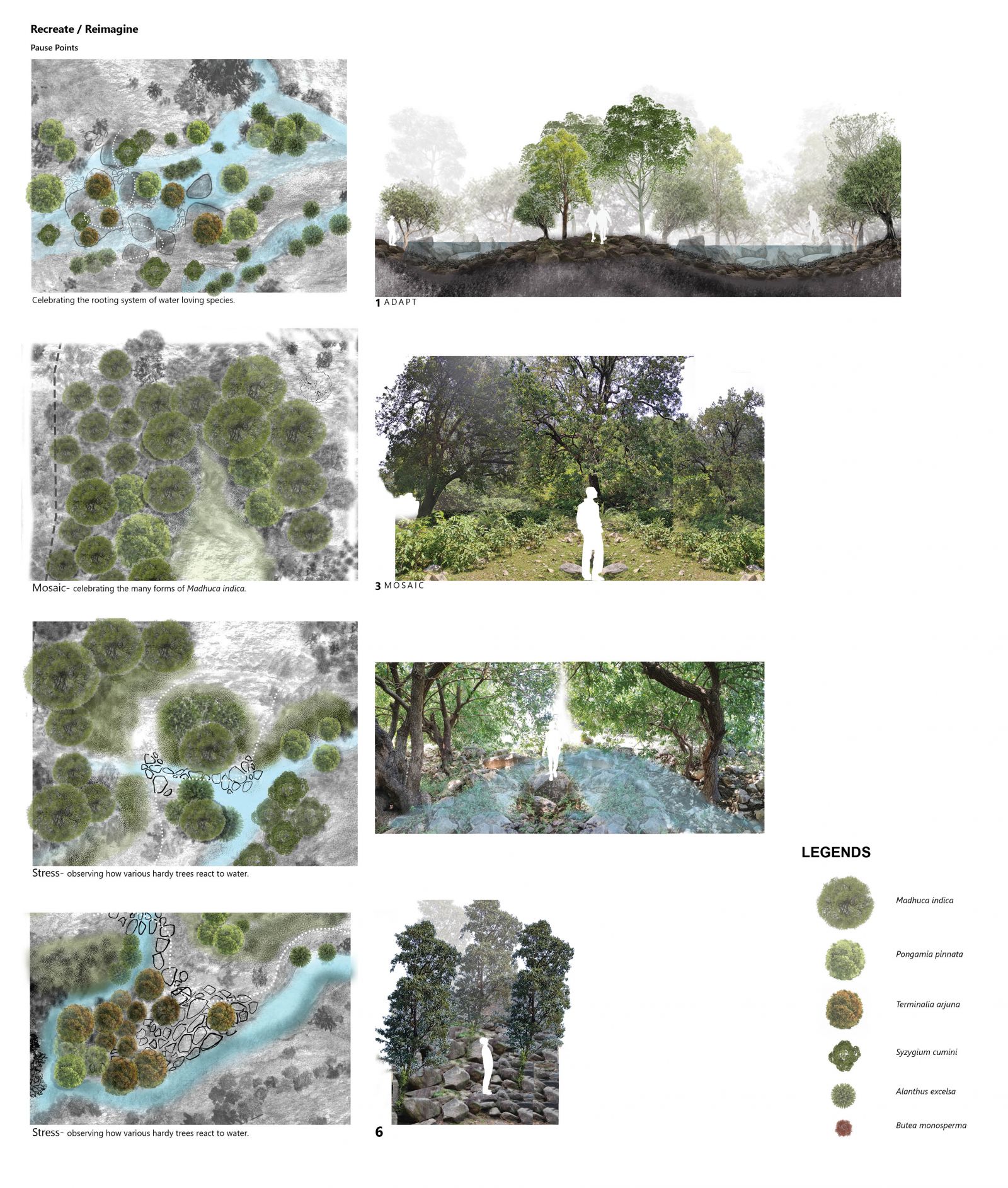Your browser is out-of-date!
For a richer surfing experience on our website, please update your browser. Update my browser now!
For a richer surfing experience on our website, please update your browser. Update my browser now!
Nestled within the southern Aravalli ranges, Phulwari ki Nal exhibits a variation of dynamic ecosystems, where it is observed that plant species navigate a myriad of challenges, showcasing remarkable adaptations to varying conditions. The study aims to explore variations, adaptations in the flora of this unique forest.
Plants in Phulwari ki Nal grapple with limiting and stress factors such as soil composition, moisture availability, altitude, and the micro-climate of their surroundings.
The interplay of these elements induces variations in plant morphology and physiology, compelling species to adapt in order to survive and thrive. The plant’s ability to showcase variations within a homogenous environment highlights the complex nature of their genetic makeup. Taking the example of Pongamia pinnata, a key player in this ecological symphony, exemplifies the profound impact of environmental stresses on it. In the riverine forest, characterised by clayey soil, Pongamia faces a challenge as water retention leads to root decay, resulting in stunted tree height. In contrast, the species thrives and fairs better in the mixed forest where sandy and gravelly soils facilitate proper drainage. The observed variations in Pongamia’s morphology underscore the plant’s adaptive strategies in response to distinct stresses within its habitat. These adaptations not only bolsters their resilience but also the features of adaptations also demonstrate ever-changing evolutionary shifts, leading to a variation in landscape settings and relationships.
